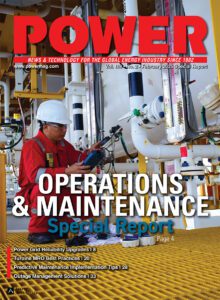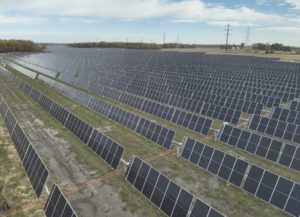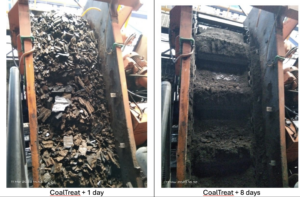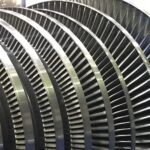Effective maintenance, repair, and overhaul (MRO) practices are vital for reliable turbine operation. Innovative technologies such as artificial intelligence and 3D scanning are transforming MRO processes. Proactive planning and using systematic problem-solving approaches can also help reduce downtime and ensure reliable performance.
Turbine MRO (maintenance, repair, and overhaul) operations refer to the comprehensive maintenance processes for both gas and steam turbines, and their associated generators, typically found in power generation plants and industrial applications. Implementing sound MRO practices is vital to maximizing turbine-generator reliability and performance while minimizing downtime.
The main components of turbine MRO include regular inspections and diagnostics to assess items such as blade wear and damage, bearing conditions, combustion system integrity, control system functionality, and alignment and vibration readings. Among major maintenance activities involved in the process are hot-gas-path inspections, rotor removal and refurbishment, blade replacement or repair, stationary component repair, bearing maintenance, control system updates, and component balancing. Modern MRO practices increasingly incorporate predictive maintenance using sensors and data analytics, digital twin technology for performance modeling, advanced non-destructive testing techniques, and automated inspection systems.
Managing a robust turbine MRO program involves significant planning. A strict maintenance schedule based on operating hours and starts must be adhered to, with good historical data being vital to success. The program not only requires reliable operating data, but also detailed documentation of all previous maintenance activities and inspection findings. Meanwhile, a comprehensive parts inventory management system is also important in the process.
“The most effective maintenance strategies for reducing turbine downtime are those that prioritize proactive planning, advanced diagnostics, and unit operational duty understanding,” Jay Eldridge, vice president of Sales and Marketing with Mechanical Dynamics & Analysis (MD&A), told POWER. “At MD&A, we’ve found that a combination of predictive maintenance, quality repairs, and comprehensive overhauls delivers the greatest results in minimizing downtime and ensuring consistent unit performance.”
Vibration Analysis: A Key Diagnostic Tool
When it comes to advanced diagnostics tools, few are more valuable than vibration analysis. At a high level, vibration analysis involves measuring the vibration levels and frequencies found in machinery, and using that information to gauge the health of components. In the past, vibration analysis has primarily been used to identify mechanical faults in rotating equipment and measure their severity, allowing repairs to be made in a planned and scheduled manner, thus reducing unplanned downtime. There’s definitely value in that, but in today’s world, online and wireless monitoring are making it possible to identify problems before they lead to faults, which allows engineers to be proactive rather than reactive.
Many providers now incorporate artificial intelligence (AI) and machine learning (ML) into the process. Rather than waiting for a fault to be identified through a route-based methodology using a hand-held portable analyzer, permanently installed sensors can feed data to programs featuring AI and ML algorithms that continuously look for anomalies. The greatest value comes from identifying those times during operation when the equipment is operated outside its steady state parameters, such as during startup or some other upset condition, and modifying procedures to minimize those hard-on-equipment periods.
MD&A uses vibration diagnostics as one of the tools to get a clear understanding of the state of equipment in power facilities. Its team of diagnostic/balance engineers can comprehensively analyze the mechanical condition of rotating equipment assets, and then offer the best and most cost-effective solutions for maintaining machine integrity.
Additionally, MD&A has a High-Speed Balance Facility in St. Louis, Missouri, which it uses to ensure vibrations are kept to a minimum in equipment it has repaired. The facility was designed with both vacuum capability and the ability to excite generator rotors at high speed, allowing the testing and balancing of both steam turbine and generator rotors (Figure 1). High-speed balancing has proven to be very effective in validating the repairs, ensuring effective operation when returned to service.
 |
|
1. A generator rotor is shown here in Mechanical Dynamics & Analysis’ (MD&A’s) High-Speed Balance Facility in St. Louis, Missouri. Courtesy: MD&A |
More Game-Changing Technologies
Beyond vibration analysis, MD&A said 3D scanning has revolutionized repair and parts replacement. “Using 3D scanning technology for reverse engineering, we can create precise digital models of components, allowing for rapid reverse engineering and manufacturing of custom parts,” Eldridge explained.
Other innovative inspection tools are also adding value. “Advanced imaging techniques, such as phased-array ultrasonic testing, X-ray inspection, and thermographic inspection, provide detailed insights into component integrity without the need for further disassembly. These methods allow MD&A to detect cracks, wear, and other issues with unparalleled accuracy, reducing inspection times and improving repair planning,” he added.
Lastly, MD&A said advances in robotics have streamlined maintenance tasks in hard-to-reach areas. The company said its generator in-situ inspection robot can perform full generator inspections without removing the field. “These technological advances have allowed MD&A and the broader power industry to offer faster, more precise, and cost-effective solutions,” Eldridge reported.
MD&A has used an innovative robotic generator inspection crawler supplied by East Hanover, New Jersey–based Nova Technology Inc. Called the GenEX (generator explorer), it is reportedly the lightest generator inspection crawler (Figure 2) and has the highest resolution available on the market today, according to Nova Technology. The crawler itself weighs less than 5 pounds and can enter generators with gaps as narrow as 0.9 inches (22.86 millimeters). It has dual full-HD (high-definition) color video cameras including one forward facing camera and one at a right angle that rotates and has variable focus. LED (light-emitting diode) lighting helps provide clear and crisp 5 megapixel annotatable still images of inspection areas, which can be displayed on a portable monitor or laptop computer.
 |
|
2. The GenEX crawler provides rapid assessment of generators without removing the rotor, meeting traditional inspection requirements at a fraction of the cost. Courtesy: Nova Technology |
“Until now, in-situ inspection services have largely been the domain of the OEMs [original equipment manufacturers],” Richard Hatley, president of Nova Technology, told POWER. “We’ve enabled service providers to provide an offering that not only saves time but also can eliminate the tremendous expense of an unnecessary field pull. The GenEX provides accurate assessments in hours or days, not weeks.”
The GenEX crawler can be used for stator wedge tightness assessment (Wedgetap) and electromagnetic core imperfection detection (El-Cid) inspections, among others. The GenEX has proven to be incredibly valuable to users. It has found faults, shorts, material deterioration, and more, while cutting downtime by avoiding costly field pulls. GenEX has greater maneuverability than a magnetic crawler and can get into spaces some other video inspection crawlers can’t.
Hussien Sadek, past president and current member of The American Society for Nondestructive Testing (ASNT), and president and CEO at Technologies Consulting International, noted that eddy current array (ECA) examination can be an important inspection technology in power generation facilities. ECA rapidly scans large equipment components by using custom-designed array coils that generate C-scan images. These images assist visual inspection and determine the location, size, and orientation of defects in equipment including in turbine blades. Today, ECA technology employs advanced data analysis and software to record test results, minimizing an operator’s analysis, and allowing future analysis by third-party interpretation, characterization, and generation of final reports.
“When eddy current array technology is incorporated into the overall predictive and preventive maintenance program at a facility, the inspection and the condition evaluation of major equipment is conducted rapidly with minimum downtime,” Sadek told POWER.
Leaning on Experts
Yet, when routine inspections don’t lead to easy answers and more complicated situations arise, consulting with experienced engineers who perform turbine MRO projects for a living can be important. That’s because they often have a systematic, multi-disciplinary approach to diagnosing complex issues and/or may have come across a similar issue at another facility.
“At MD&A, we excel in tackling these challenges by leveraging cutting-edge technology and a methodical process to identify root causes and implement effective solutions,” Eldridge said. “When routine inspections fail to reveal the source of a problem, we begin with a deep dive into the turbine’s operating history, performance data, and maintenance records. Next, we deploy advanced diagnostic techniques tailored to the suspected issue.”
Eldridge said MD&A’s cross-functional team of engineers and technicians collaborates closely throughout the diagnostic process. “Their combined expertise in materials science, mechanical engineering, and turbine operations ensures a thorough evaluation of the problem from multiple angles,” he said. “Once the root cause is identified, we work with the client to develop a targeted repair or mitigation plan. Whether it involves component replacement, precision machining, or an operational adjustment, we prioritize solutions that not only resolve the issue but also prevent recurrence. Comprehensive testing and validation ensure the turbine is returned to service with optimal reliability.”
Aging Equipment
The increasing age of installed turbine fleets has fundamentally reshaped maintenance strategies, driving a shift from reactive repairs to proactive and predictive approaches. Older turbines present unique challenges, such as material fatigue, outdated designs, and limited availability of original equipment manufacturer (OEM) parts, leading to a requirement for innovative and tailored solutions.
“At MD&A, we’ve seen a lot in our 42 years and have become very familiar with the failure modes of older turbines and generators,” said Eldridge. “This allows us to identify and address potential issues before they result in unplanned outages, reducing downtime and repair costs.”
Eldridge noted that aging fleets often suffer from a lack of compatible replacement parts due to design obsolescence. “To address this, we utilize reverse engineering to manufacture custom components that match or exceed original specifications. This not only ensures compatibility, but also extends the operational life of aging equipment,” he said. “In addition, we frequently recommend upgrade solutions, such as control system retrofits or upgraded valves or enhanced blades that enhance turbine efficiency and reliability.”
Extending Component Lifetimes
Elevated temperatures take a big toll on gas turbine components, risking cracks, corrosion, wall thickness, and material condition. Repair enhancements can extend a part’s life by slowing its degradation and pushing out its usable service life. Operators can see significant savings by opting for lower-cost repaired spares rather than purchasing new parts.
For example, MD&A’s Gas Turbine Parts Service Facility in San Antonio, Texas, evaluated two sets of 7FA second-stage blades to determine if they were capable to operate for a third service interval. The blades had operated through two service intervals and undergone one repair.
The team performed an X-ray inspection on the components in their as-received condition, which did not reveal any areas of concern, nor clogging on the cooling holes. A fluorescent penetrant inspection (FPI, Figure 3) was performed to look for significant cracking, paying close attention to the platform side face due to the substantial number of starts reported. The area around the shroud radius was also evaluated for cracks. The team found no major areas of concern during the preliminary FPI inspection but still performed a more thorough inspection once the metallic coating was chemically stripped.
 |
|
3. A fluorescent penetrant inspection (FPI) uses black light technology to pinpoint any cracks. Courtesy: MD&A |
The MD&A San Antonio facility deemed the condition of the internal coating as acceptable and in good condition to operate for one more service interval. The external coating protected the external surfaces and was recommended for removal to allow a good FPI inspection of the hot-gas-path surfaces.
Microhardness readings taken at several blade locations showed a significant drop in the base material hardness where parts had been exposed to higher temperatures. These areas also showed significant degradation to the gamma prime structure under inspection by a scanning electron microscope. Hardness values after heat treatment demonstrated that the GTD 111, a GE-developed nickel-based superalloy used in gas turbine blades due to its excellent high-temperature strength and corrosion resistance, responded well to the process and the overall blade hardness values were improved.
For heat treatment, MD&A experts use a vacuum heat treat furnace in which the heating and cooling of metals is controlled to alter their physical and mechanical properties. There is a pre-weld heat treatment, post-weld heat treatment, and a diffusion or aging heat treatment solution.
Samples were removed from the blades for stress rupture testing. The as-received condition did not meet the minimum expected strength requirements for GTD 111. However, the samples tested after heat treatment exceeded the minimum requirements.
After the repair heat treatment, the rupture strength was improved. This demonstrates that the repair heat treatment was able to rejuvenate the parts sufficiently to operate for one more service interval.
In the end, MD&A experts evaluated each component in the as-received condition and in the post-repair heat-treated condition. Improvements in the alloy mechanical properties were evaluated to determine if the two sets were candidates for a lifetime extension repair. Once deemed that they were, the team employed repair practices to further extend the useable life of the components.
Overcoming Maintenance Challenges
MD&A told POWER that one of the most challenging types of turbine repairs it encounters involves addressing potentially catastrophic failures, such as cracked rotors or extensive blade damage caused by operational stresses or foreign object impacts. These types of repairs require not only technical expertise, but also precision and innovation to restore the turbine’s integrity and efficiency. Eldridge said MD&A approaches these challenges with a structured and collaborative methodology that includes:
- Thorough Assessment. MD&A’s process begins with detailed inspections using advanced non-destructive testing (NDT) techniques and 3D scanning technology. This allows the company’s experts to understand the full scope of the damage and identify root causes.
- Reverse Engineering Expertise. For components where OEM parts are unavailable or outdated, MD&A leverages its in-house reverse engineering capabilities to manufacture high-quality replacements that meet or exceed industry standards.
- Custom Solutions. MD&A said it recognizes that every repair is unique. Whether it involves intricate welding, specialized heat treatments, or alternatives to OEM design, the company tailors its solutions to address the specific challenges of each case.
- Testing and Validation. Once repairs are complete, MD&A rigorously tests the components to verify performance, including full-speed testing in its High-Speed Balance Facility, to ensure reliability and long-term success.
“Our goal is to not only restore functionality, but also to enhance reliability and efficiency, helping our customers minimize downtime and achieve peak performance,” Eldridge said. “It’s this commitment to innovation and precision that has earned MD&A its reputation as a trusted OEM-alternative in the power industry.”
Secrets to Success
In the end, turbine owners and operators must balance the need for thorough inspection and maintenance with operational schedules. Success often requires a strategic approach that prioritizes efficiency, flexibility, and collaboration. Among the most important aspects that lead to a positive outcome are:
- Planning and Scheduling. Owners and operators must work closely with contractors to develop a customized maintenance plan that aligns with a unit’s operational goals.
- Communication. Clear and constant communication among owners, operators, contractors, and suppliers is essential.
- Project Execution. Project managers must diligently manage all aspects of turbine MRO work in order to hit schedule and budget targets, and complete a successful outage.
“Ultimately, the key to reducing downtime lies in balancing proactive maintenance with experienced execution,” said Eldridge. “By blending cutting-edge technology, engineering expertise, and a deep understanding of aging equipment, MD&A helps customers maximize the value of their turbine assets, keeping them reliable and efficient well beyond their original design lifespans.”
—Aaron Larson is POWER’s executive editor.











